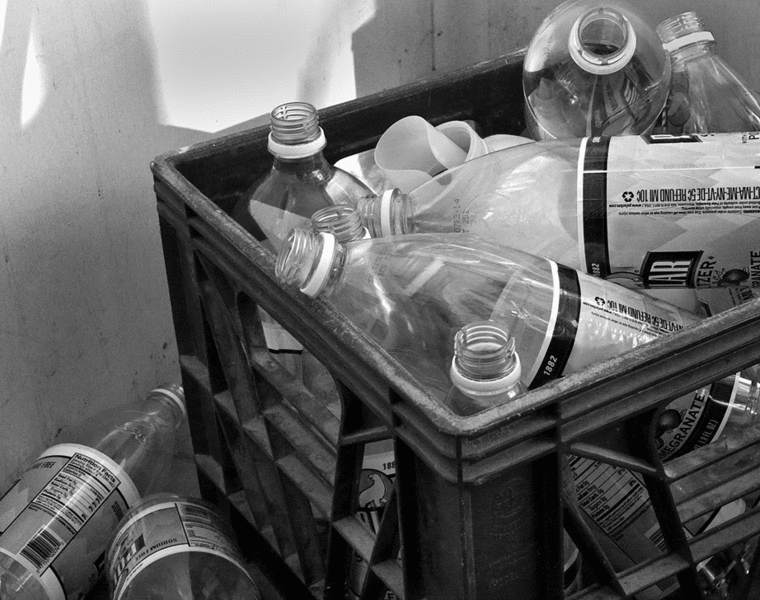Around the same time I was editing that Tang review, I heard a fellow on the radio talking about a primeval forest in Poland. The speaker was journalist Alan Weisman discussing his book The World Without Us. The Polish forest he described is a vestige of the great forest that covered all of Europe while hominids were still learning to walk upright along the shores of Lake Tanganyika; it was his way of introducing the notion of a world devoid of people. Weisman had asked himself what would happen if something, say a great epidemic, spread around the globe and eliminated all human life, but left the rest of nature untouched. What would the planet look like in a decade, a century, a millennium?
Weisman’s answer is an inquiry into the process of decay, and his book a meditation on the nature of impermanence. In less than a century, every wood frame house in every upstate suburb will have collapsed, and trees would be growing where there once was highway. In our great cities, the effect would be much the same. The skyscrapers would be undermined by water, ravaged by fire, and eventually fall under their own weight. Cockroaches and rats would be replaced by songbirds and coyotes.
The scenarios Weisman presents are fascinating and sobering. Most of what we think of as lasting would be eaten, rusted, or eroded into oblivion. Few human wonders would endure even a couple hundred years, the exception being our great stone structures (and bathroom tile, which in composition is pretty much already fossilized). The next inhabitants of the planet would find evidence of us in the Chartres cathedral, the Giza pyramids, and the walls of Machu Picchu. In these, and in our plastic. In 50,000 years, after wind, rain, volcanoes, or glaciers have leveled even the stone, plastic will remain as the fingerprint of our existence.
This is mind-boggling, when you consider that plastics have only been plentiful for about 50 years. Although the first synthetic plastic was invented exactly 100 years ago, it was after World War II that the polymer floodgates opened, deluging the world with polyvinyl chloride (PVC), polystyrene, polyurethane, polypropylene, polyethylene, nylon, acrylic. All are essentially chains of petroleum-based hydrocarbons that are easy to mold and incredibly durable. They are cheap to manufacture, and cheap to bring to market.
Cheap, of course, is the operant word when it comes to plastic. In the famous scene from The Graduate, when the Dustin Hoffman character is offered one word of advice about his future—“plastics”—what his middle-aged counselor is telling him is how to make a fortune, but what Benjamin hears is a recipe for a life that’s phony, cheesy, disposable, and, from its inception, dead. These disparate perspectives pretty much sum up the history of plastic, one in which huge corporate interests, seeing vast profits in polymers, redefined our lives, inundating the world with plastic objects, and creating, in the process, a mountain of stuff that nearly all ends as trash.
Weisman reports that in the past half-century, the total production of plastic products has exceeded one billion tons. And except for a small amount that’s been incinerated, it’s all still out there. Like Marley’s coil, link by link, yard by yard, these hydrocarbon chains have become a ponderous weight. Polymers do not biodegrade, because there are no microbes that eat them. They stuff our landfills and fill our oceans, where the currents create vast zones choked with waste. A big polymer might break down to smaller chains, but it doesn’t go away. Tiny particles of plastics are found in the sand of nearly all the world’s beaches. Plastic enters the food chain, where it clogs the digestive systems of wildlife. Sea turtles choke on plastic bags thinking they’re jellyfish. Krill and other tiny creatures that form the basis of the ecosystem ingest beads of it and die.
The Tang Museum named polyethylene, which is the basis of plastic bottles, bags, and toys, one of its 10 matterful molecules. The curators observe that “the average American is never more than three feet away from a polymer.” This information alarmed me. I began to consider what it means to live in a Plastic Age created by huge companies and fed by consumer lust. What being defined by a lifeless, wholly synthetic material portends for the planet (and not just the sea turtles—vinyl siding, for example, is egregiously toxic to the workers who make it and to the environment); and how plastics have patterned, and in distinct ways cheapened, our culture. I tried to imagine living without plastic, the way people have spent a year eating only local food, or not watching TV, just to register the impact. But the notion is absurd, because it has become literally impossible. I did a cursory scan of all the plastic in my life. In less than 20 minutes, I’d filled six pages of my notebook (whose spiral binding is coated in plastic), and that didn’t include all the tiny plastic components inside things that make them run. I’d literally need another page of this magazine to write the list down, but there’s no point. It’s the same for everybody.
I’m as much a creature of my age as anyone, and wouldn’t want to live in a world without plastic. But there’s no way we need so damned much of it. I think about the things in my lifetime that used to be made of other materials, but are now all or part plastic. It’s astonishing. Egg cartons, garbage cans, lawn rakes, snow shovels, flowerpots, milk crates, pencils, zippers, razors, cotton swabs, soda bottles, tricycles, storage sheds, window blinds, cutting boards, lawnmowers, chainsaws, cars ... the list never stops. With oil at around $100 a barrel, the day may not be far off when plastic is no longer cheap to make or buy, and we’ll begin to see less of it. And scientists guess that someday—say in 100,000 years—a microbe will evolve that can digest polymers, and slowly eat its way through all the plastic of our manufacture. Till then, we can build pyramids with it.












